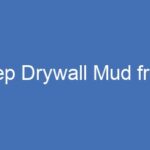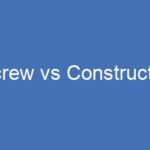Insulated Metal Panels (IMPs) have a rich history spanning nearly a century, but it wasn’t until the 1970s that they gained significant attention.
Today, insulated metal panels are more popular than ever for both interior and exterior wall applications.
Fast forward to the 21st century, a time when reducing greenhouse gas emissions is a global priority, and the focus is on construction speed and maintenance cost reduction.
Consequently, the demand for this building material is growing rapidly, largely due to its energy-efficient properties and the resulting reduction in heating and cooling expenses.
Let’s delve into the world of insulated metal panels (IMPs): what they are, how they’re manufactured, and the multitude of benefits they offer.
Understanding Insulated Metal Panels
Insulated metal panels are a lightweight, single-component construction material consisting of a metal exterior and a solid urethane core.
They are characterized by insulating foam sandwiched between two steel or aluminum face panels, creating a robust “sandwich” wall system.
Originally designed to expedite construction projects, today they provide a building envelope system that combines sheathing with thermal, air, and vapor barriers.
IMPs are employed for interior walls, exterior walls, and roofs, gaining popularity for their superb insulation properties and ease of installation.
They are so effective at energy conservation that their use often surpasses energy efficiency standards, making them eligible for LEED certification.
Insulated metal panels can reduce construction costs due to their efficient installation, minimal use of fasteners, and the need for only one trade skill during installation.
IMP walls are available in both flat and corrugated profiles, offering architects and designers a variety of choices not found in other cladding options.
Available in a range of colors, sizes, profiles, and finishes, IMP walls suit any style or aesthetic and can be installed either vertically or horizontally.
Insulated wall panels are commonly used in the construction of office buildings, aircraft hangars, storage facilities, and manufacturing plants.
How Insulated Metal Panels Are Manufactured
There are two standard processes for manufacturing IMPs:
Foamed-in-place: In this process, liquid or froth polyurethane foam is injected between two metal sheets, which adheres to the metal skins once dried.
After drying, this foam-and-sheet combination becomes a single unit with exceptional thermal properties, offering protection against water infiltration and serving as an air barrier to resist insects, rodents, and moisture.
Lamination: During this process, pre-cured foam is bonded to pre-formed metal facers using high-pressure adhesive in a platen press operation.
Both of these manufacturing methods are proven, resulting in consistent foam thickness and uniform insulation efficiency.
Why Choose Insulated Metal Panels Over Drywall?
There are numerous reasons to opt for insulated metal panels over drywall partitions with traditional light gauge framed wall systems.
Especially in an era where energy efficiency is paramount, IMPs offer substantial cost savings due to their insulating foam core and excellent thermal properties.
Here are a couple of reasons to consider IMPs instead of drywall partitions for your next building project:
1 – Simplified Installation of IMP Walls
Insulated metal panels are often described as an all-in-one solution.
These modular panel systems eliminate the need for separate products as their interior and exterior metal faces serve as a single finished surface.
IMP wall panels enable builders and contractors to streamline construction because they come as a pre-finished piece and can be installed efficiently, saving time and money.
Simply eliminating the drywall taping process is a cost-effective reason to consider IMP walls, not to mention the reduction of on-site dust.
Ultimately, it all comes down to cost-efficiency, primarily because a single contractor can handle IMP installation, reducing the risk of errors.
2 – IMP Walls’ High Strength-to-Weight Ratio
Insulated metal panels offer an impressive strength-to-weight ratio, enabling them to span larger areas and thus reducing the overall material and labor requirements for the entire project.
Building owners can save on maintenance and utility expenses while cutting costs at every stage of the construction process, including components and installation.
3 – IMP Walls Enhance Energy Efficiency
Insulated metal panels come with a built-in insulated core, providing excellent energy-efficient insulation, lightweight construction, and long-term durability.
They are versatile and suitable for various applications, including interior walls, exterior walls, and roofing. When installed correctly, these panels can last for four decades or more.
IMPs create a high-performance building envelope due to their urethane core and interlocking design, forming an impermeable barrier.
Consequently, buildings with IMPs meet LEED standards, achieving high R-values and reduced heating and cooling costs.
4 – A Wide Range of Styles and Colors
Insulated metal panels are favored for their wide variety of colors, widths, finishes, and profiles, offering virtually any desired aesthetic for walls and roofing.
The customizability of these panels makes them a popular choice for offices, banks, warehouses, government buildings, hospitality establishments, cold storage facilities, and schools.
5 – Lower Maintenance Costs for IMP Walls
Like other metal roofing products, insulated panels require minimal maintenance, resulting in lower ownership costs.
They are easier to maintain than other materials, providing building designers with the flexibility to allocate resources to other areas.
6 – The Sustainability of IMP Walls
Most IMPs are 100% recyclable at the end of their life cycle. These panels are long-lasting, with a life expectancy of 20 to 30 years, reducing the need for frequent replacements.
Additionally, construction waste is minimized after project completion.
Still not convinced that IMPs may be a superior choice compared to drywall?
Additional Reasons to Consider IMP Walls
- Weathertight and suitable for any climate
- Accelerate construction speed
- Architecturally diverse and design-forward
- Minimal thermal bridging for enhanced thermal efficiency
- Highly sanitary
- Lower maintenance and upkeep compared to finished interior drywall and exterior stucco walls
- Available in various embossment patterns for a multidimensional façade and design versatility.
Leading IMP Wall Manufacturers
The industry’s top three manufacturers are Metl-Span, Kingspan Panel, and Centria, with Kingspan dominating more than half of the market.
Kingspan
Founded in Ireland in 1965, Kingspan is a global leader in advanced insulation and building envelope solutions, committed to driving a net-zero emissions future.
Specializing in insulated metal panels for various building applications, including roofs and facades, Kingspan has a nationwide network of distributors.
Kingspan offers a standard 2-year material warranty and a 20-year standard finish warranty.
Kingspan Product Offerings
Designwall 2000
- Applicable on vertical or horizontal surfaces
- Double barrier for air and water protection
- Custom finishes and panel widths
- Available in 2″ to 4″ thickness
- R-Value of 5.8 per inch of thickness
Designwall 4000
- Ideal for large-scale projects
- Available in embossed or non-embossed finishes
- Offered in 2″ to 4″ thickness
- R-Value ranging from 8 to 9 per inch of thickness
Designwall R Series
- Two different spacings for unique profile designs
- Available in 2.5″ to 4″ thickness
- R-Value ranging from 9.4 to 18.1
- Lengths vary from 12′ to 24′
Metl-Span
Metl-Span, a subsidiary of Nucor, has been a pioneer in insulated metal panels since 1968, providing cutting-edge solutions designed for long-lasting performance.
With headquarters in Dallas, TX, Metl-Span operates seven manufacturing plants across North America.
Centria
Centria manufactures insulated metal panels, rain screens, roof systems, and coatings, based in Pittsburgh, PA, serving diverse markets such as convention centers, healthcare facilities, manufacturing plants, and hotels/motels.
Centria offers a 10-year weathertight warranty for their MetalWrap backup panel product.
Nucor Building Systems
Founded in 1987 in Waterloo, IN, Nucor is a leading steel building manufacturer with full-service plants in four states, offering a complete line of insulated metal wall and roof panels in various colors.
Choosing the Right Sealant for Insulated Metal Panels
The most common sealant for insulated metal panels is a white urethane sealant applied with a caulking gun.
Sealant is used around the perimeter and penetrations of each wall panel.
Leading manufacturers of IMP caulking include Surebond, Titebond, and NPC Sealants.
The Future of IMP Walls
With a multitude of established manufacturers and a plethora of beneficial properties, building owners and architects should seriously consider insulated metal panels.
Metal wall panels offer an array of diverse benefits, serving as a viable alternative to traditional interior drywall construction.
Delivering energy efficiency and eco-friendly end-of-life outcomes, insulated metal panels undeniably represent the construction material of the 21st century.
tag: # IMP Walls, Insulated Metal Panels







